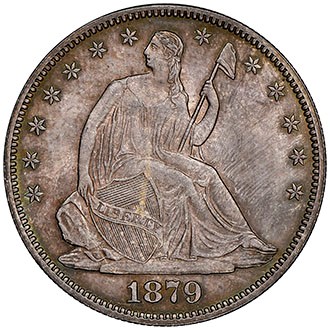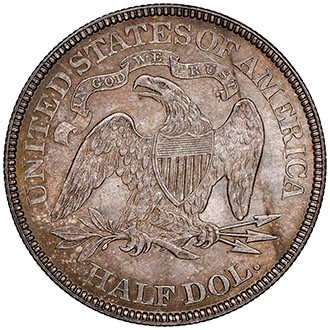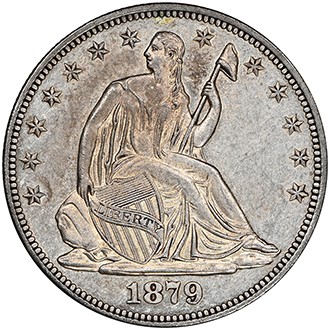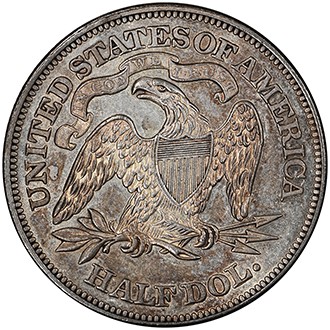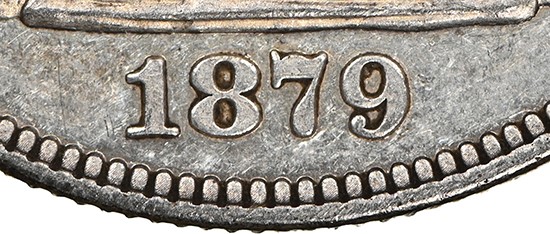Counterfeit Detection: 1879 Half Dollar
Posted on 6/27/2022
Production of Seated Liberty half dollars (1839-91) slowed significantly in the series’ final years. Starting in 1879, these coins were struck only in Philadelphia and at a rate of fewer than 13,000 per year through 1891. This was in sharp contrast to the previous decade, when several U.S. Mint facilities produced at least 1 million annually.
The numismatic community at the time was well aware that the mintage had dropped sharply for the 1879 half dollar, so many are preserved today in Mint State. While it is not a key date, the 1879 half dollar generally costs at least $1,000 in this grade. Some collectors appreciate grade consistency across a series, and circulated examples of this issue are relatively harder to find. Consequently, lightly circulated 1879 half dollars can cost nearly as much as mint-state ones.
Numismatic Guaranty Company (NGC) recently received a purported example of an 1879 half dollar. The coin has several problems, including a date that is less sharp and more rounded than expected. This is particularly noticeable on the “1.” Additionally, the denticles are misshapen and show diagonal lines—a result of the counterfeit die-creation process.
A closer examination of the reverse shows additional red flags. The lettering appears to be disintegrating on the fake—just look at the H in HALF. Right above the H, notice the lower bud in the olive branch is split open. This design (indicating that this is a Type 1 reverse) was not used on business strikes of this half dollar.
 |
|
| Diagonal lines on the denticles and a rounded “1” bring the authenticity of this coin into question. Also, note the disintegration of the H in HALF on the reverse.Click images to enlarge. | |
A weight and metallurgical analysis were not necessary to condemn this coin as a fake. However, it should be no surprise that the weight (11.65g instead of the expected 12.5g) and silver content (1 percent instead of the expected 90 percent) were inconsistent with a genuine example.
Counterfeiters don’t target only key dates; they will attempt to replicate any coin that could be profitable. Remember, NGC guarantees that coins in its holders are genuine and not overgraded.
Reproduced with permission from the April 2022 edition of The Numismatist, an official publication of the American Numismatic Association.
Did you know? NGC has created a comprehensive Counterfeit Detection resource to help collectors and dealers identify counterfeit and altered coins. Visit NGCcoin.com/counterfeit.
Stay Informed
Want news like this delivered to your inbox once a month? Subscribe to the free NGC eNewsletter today!
